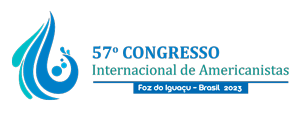| Dados do autor | |
|---|---|
| Nome | Kevin Lane |
| E-mail do autor | Email escondido; Javascript é necessário. |
| Sua instituição | CONICET |
| Sua titulação | Doctor |
| País de origem do autor | Argentina |
| Dados co-autor(es) [Máximo de 2 co-autores] | |
| Titulação | Doctor |
| Proposta de Paper | |
| Área Temática | 01. Antropologia |
| Grupo Temático | El manejo del agua en los Andes : pasado, presente y futuro |
| Título | A political ecology of water and technology from the North-Central Highlands, Peru (AD 1000-present) |
| Resumo | At present, water scarcity and concomitant climate change are increasingly seen as the main threat to human economies across large areas of the world. This is especially true of the Peruvian Central Andean highlands where lack of water is understood by experts as the single most threatened natural resource in the face of climate change and ever-retreating tropical glaciers. This is a sentiment echoed by local communities and populations. |
| Palavras-chave | |
| Palavras-chave |
|
